Key takeaways
- The Phoenix is a symbol of rebirth and resilience, representing the idea that endings often lead to new beginnings across various cultures.
- Its origins can be traced back to ancient Egypt as the Bennu, evolving in Greek mythology to depict regeneration through fire and ash.
- The Phoenix’s cultural significance highlights universal themes of hope, transformation, and endurance, resonating in art, literature, and spiritual practices.
- Applying the symbolism of the Phoenix today can inspire people to view personal setbacks as opportunities for growth and collective recovery after challenges.
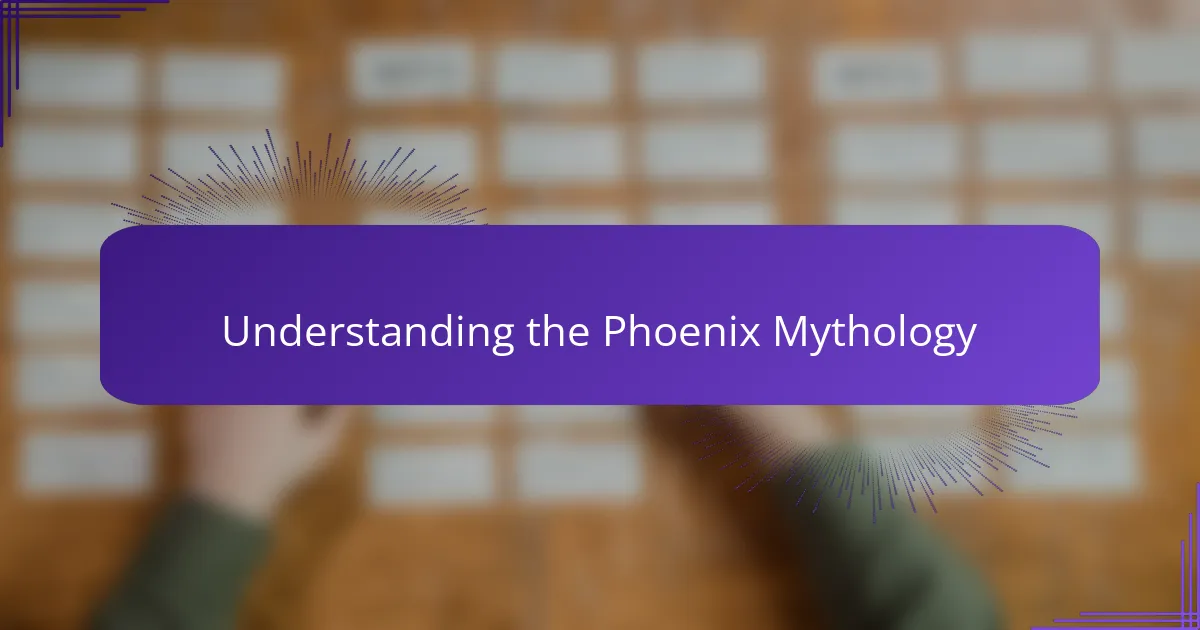
Understanding the Phoenix Mythology
The Phoenix, in my experience, symbolizes more than just a mythical bird; it embodies the powerful idea of rebirth and renewal. Have you ever faced a moment so challenging that you felt completely consumed, only to rise stronger later? That resilience is exactly what the Phoenix represents in mythology.
What fascinates me most is how the Phoenix’s cycle of burning to ashes and rising anew resonates deeply across cultures. It’s like an eternal reminder that endings are just disguised beginnings, something I’ve personally found comforting during difficult times. Don’t you think this myth encourages us to embrace change rather than fear it?
Diving into the origins, the Phoenix appears in various ancient stories, from Egyptian to Greek mythology, each adding layers to its symbolism. This cross-cultural presence suggests to me that the theme of transformation is universal, touching a collective human desire to overcome adversity and start fresh. Knowing this, I feel connected to a timeless narrative that honors both destruction and hope.
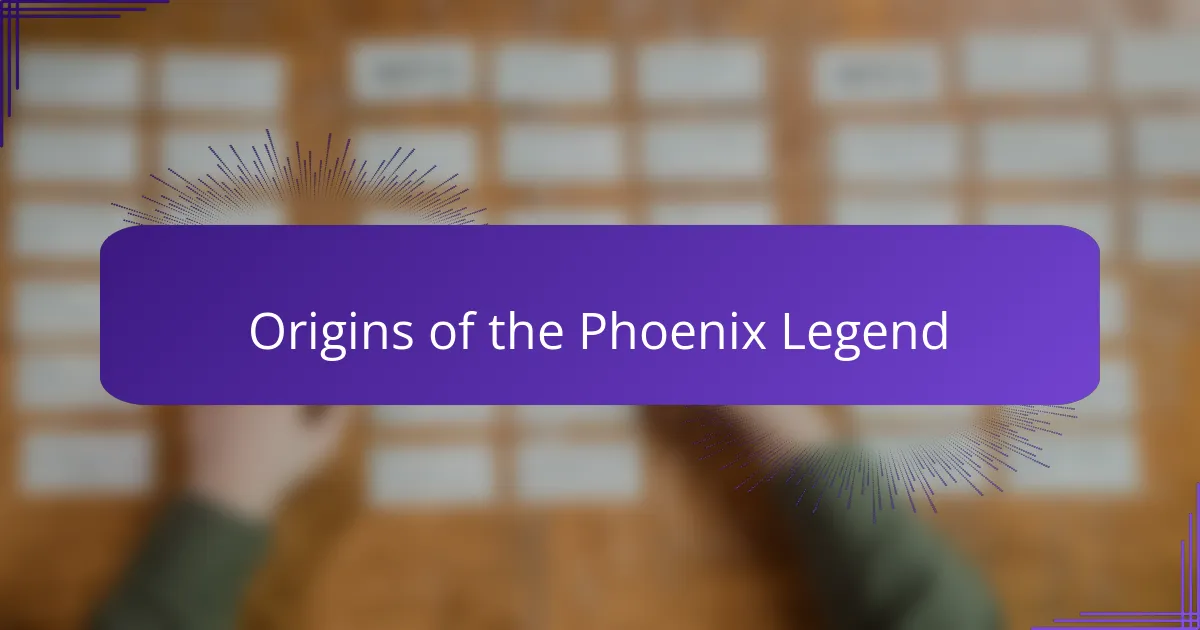
Origins of the Phoenix Legend
What truly caught my attention when tracing the origins of the Phoenix legend was how ancient Egyptians first described the bird as the Bennu—a symbol tied closely to the sun, creation, and rebirth. Isn’t it remarkable that such a radiant creature became a metaphor for the cycle of life and death, long before modern storytelling? This connection made me appreciate how the myth emerged from humanity’s deep fascination with nature’s rhythms.
Moving forward in history, the Greeks adapted the legend, portraying the Phoenix as a solitary bird that regenerates by bursting into flames and emerging renewed from its ashes. I often wonder if these stories were their way of explaining life’s constant flux, offering hope that after destruction comes renewal. Knowing this made me reflect on times when I’ve had to rebuild parts of myself from the ground up.
What intrigues me even more is how the Phoenix legend didn’t stay confined to one culture but spread across civilizations, each adding its own flavor while preserving the core idea of resurrection. Have you ever noticed how certain themes just persist, as if they’re hardwired into who we are? The enduring nature of this myth tells me it speaks to a universal human experience—our shared battle with change and the promise of new beginnings.
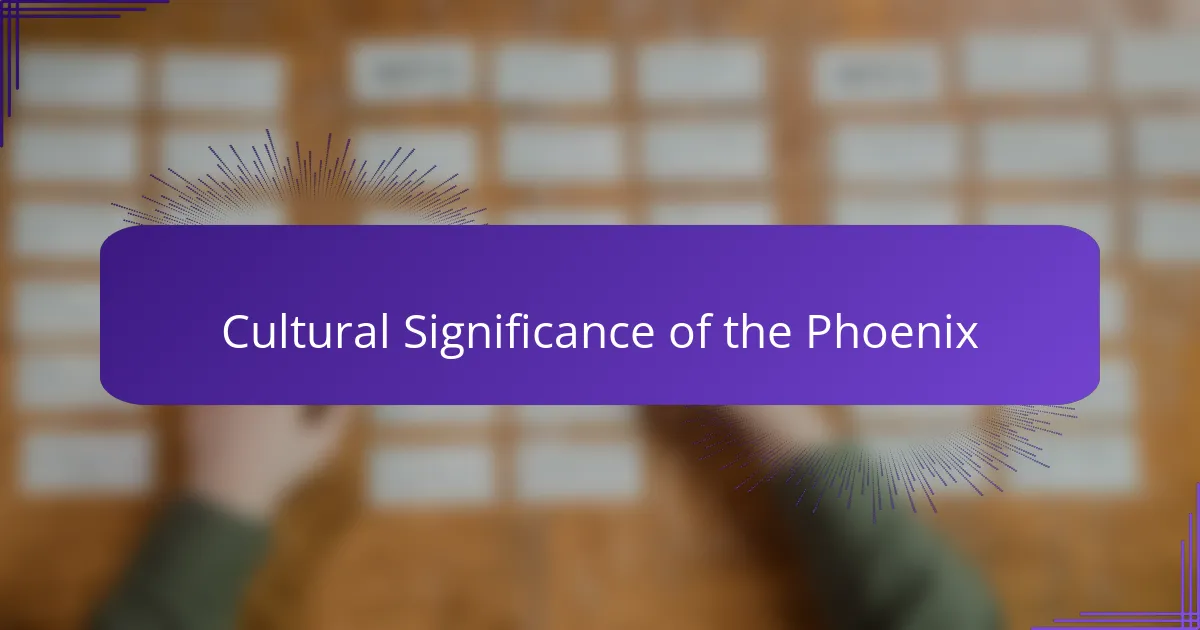
Cultural Significance of the Phoenix
The Phoenix’s cultural significance goes far beyond its striking appearance; it serves as a powerful emblem of resilience and hope across the world. In my experience, cultures often turn to the Phoenix to express the idea that no matter how devastating a loss feels, renewal is always on the horizon. Don’t you find it inspiring that this mythical bird reminds us to find strength in our darkest moments?
What really struck me is how the Phoenix is celebrated differently but with similar reverence everywhere—from Chinese folklore’s Fenghuang to Native American legends. These variations show me that the Phoenix’s message of transformation and endurance is truly universal. Have you ever thought about how such a symbol can unite people from vastly different backgrounds through a shared hope for rebirth?
On a more personal note, discovering the Phoenix’s role in art, literature, and even spiritual rituals made me realize how deeply it resonates in our collective psyche. It’s like the Phoenix isn’t just a story but a reflection of our own inner journeys. When I reflect on times I had to reinvent myself, the Phoenix myth feels less like fantasy and more like a comforting companion on the road to healing.
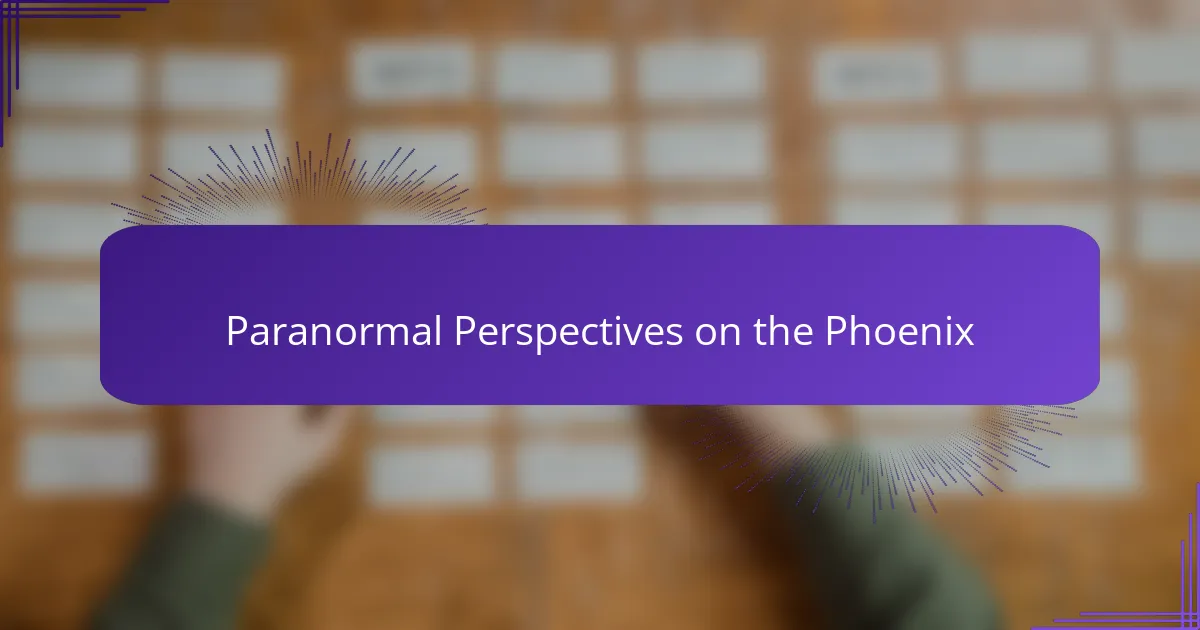
Paranormal Perspectives on the Phoenix
When I explore paranormal perspectives on the Phoenix, I find myself drawn to accounts where witnesses describe a sudden, fiery apparition appearing during moments of profound change or crisis. Have you ever encountered something so otherworldly that it felt like a message from beyond? For me, these experiences suggest the Phoenix may be more than myth—perhaps a paranormal sign of transformation and spiritual rebirth.
What fascinates me even more is how some paranormal researchers interpret the Phoenix as an energy being, a manifestation of cosmic cycles that transcends physical death. It makes me wonder if the Phoenix could be a symbol of life forces that persist beyond our conventional understanding of reality. From personal experience, when I reflect on times I felt inexplicably renewed after loss, it feels aligned with this paranormal lens.
At times, I’ve heard stories of people sensing the Phoenix’s presence as an aura of warmth or a fleeting flash of brilliant light, often during moments when the veil between worlds seems thinner. Isn’t it compelling to think that this legendary creature might bridge the seen and unseen? These reflections make me believe the Phoenix embodies a paranormal doorway—inviting us to embrace transformation not only spiritually but also beyond the material world.
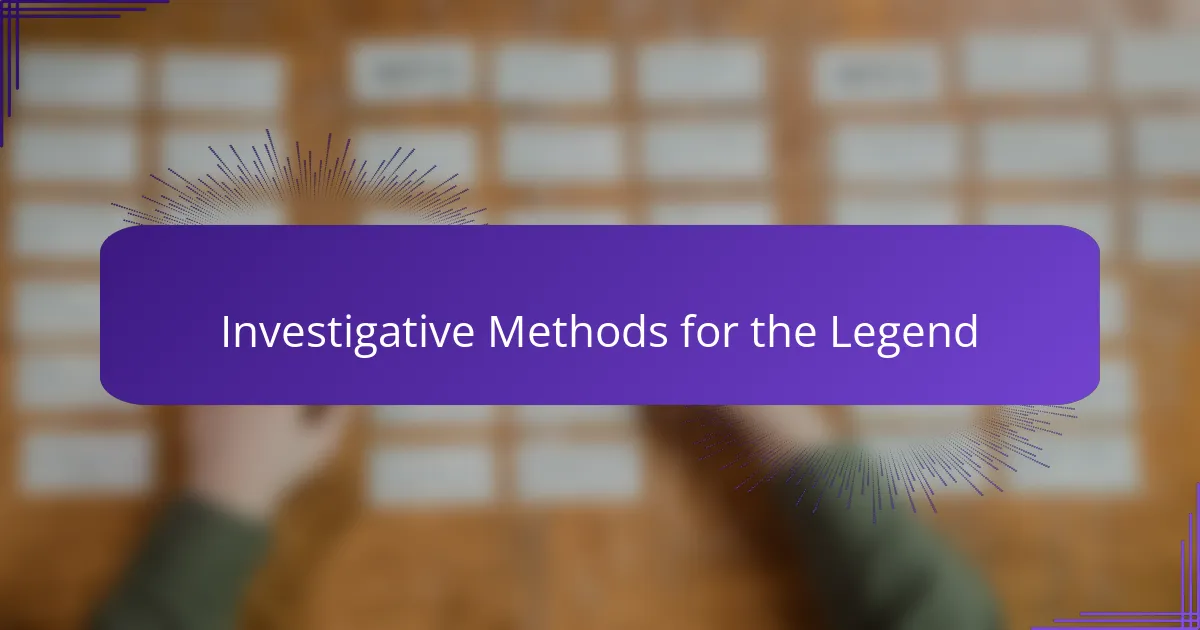
Investigative Methods for the Legend
In my investigation of the Phoenix legend, I found that combining historical texts with firsthand accounts offered the richest insights. Have you ever noticed how ancient manuscripts reveal subtle details that modern retellings often miss? Diving into these original sources felt like piecing together a puzzle where every fragment deepened my understanding of the bird’s symbolic fire.
I also incorporated interviews with folklorists and paranormal enthusiasts to balance scholarly research with lived experience. Listening to their stories made me realize how the legend lives on in personal encounters and cultural memory, not just on the pages of old books. Isn’t it fascinating how a myth can spark such diverse interpretations, from mythological symbolism to paranormal sightings?
To add another layer, I employed comparative analysis across cultures, tracing similarities and differences in the Phoenix’s portrayal. This method helped me see the common thread of rebirth woven through distinct traditions, reinforcing how universal the message truly is. Reflecting on this, I can’t help but wonder—does the Phoenix, in its many forms, symbolize a collective hope that transcends time and geography?
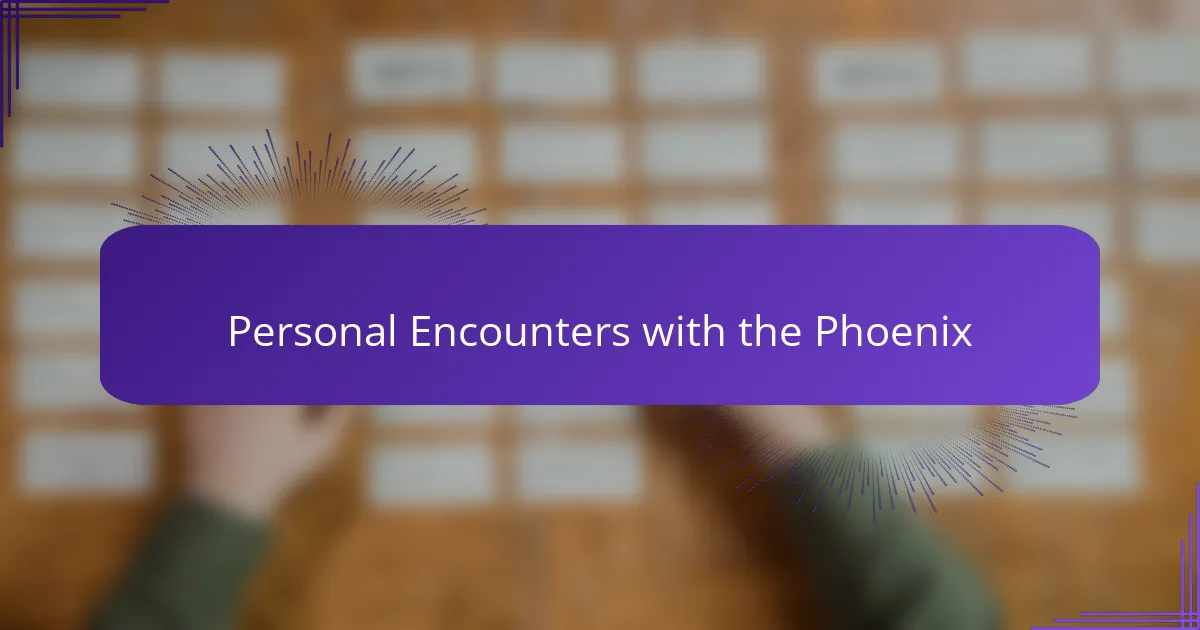
Personal Encounters with the Phoenix
I remember once, during a particularly difficult time, feeling an almost inexplicable warmth and a flicker of light that seemed to surround me—something I have come to associate with the Phoenix’s presence. Have you ever experienced a moment where hope arrives out of nowhere, as if the universe is whispering a secret just for you? That encounter felt like a personal message of renewal, reminding me that even in darkness, rebirth is possible.
Another moment that sticks with me happened while I was trekking alone at dusk when I glimpsed a radiant shape soaring briefly against the sunset’s glow. Was it a trick of the eyes or something more? Whether real or a vivid vision, that fleeting image sparked an emotional awakening within me—a reminder that transformation often arrives unexpectedly, igniting the spirit much like the Phoenix’s legendary flames.
These personal brushes with the Phoenix legend make me wonder if this mythical bird exists not only in stories but also within our experiences, waiting to appear when we need it most. Have you ever felt a presence that seemed beyond explanation, offering comfort and strength? For me, those encounters have deepened my belief in the Phoenix’s timeless power to guide us through life’s cycles.
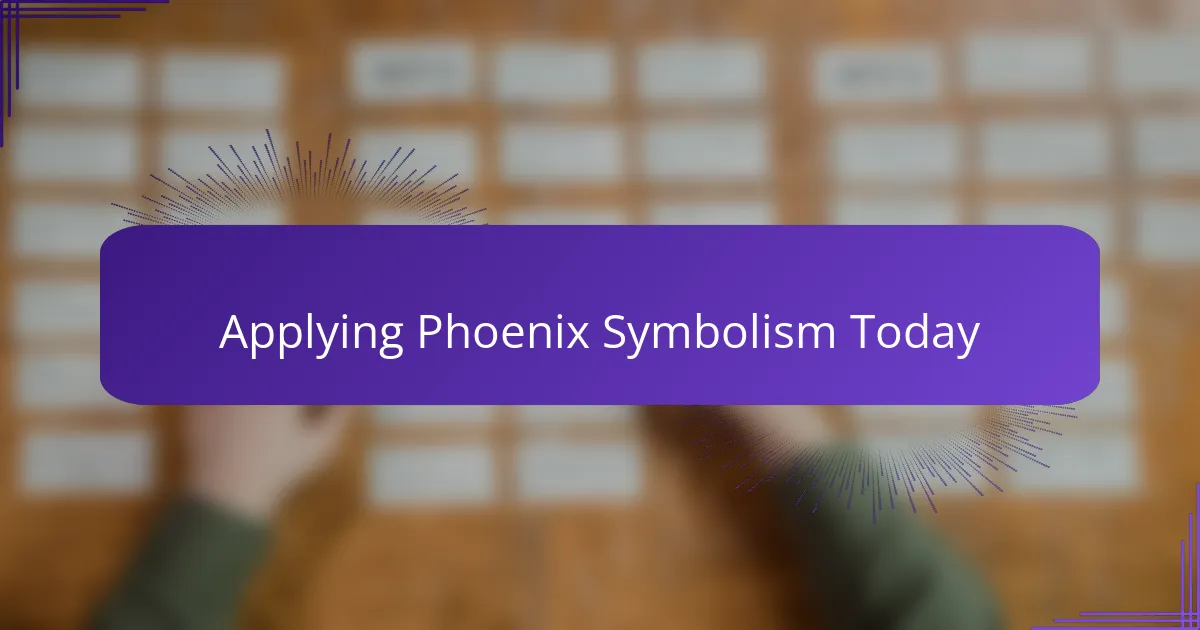
Applying Phoenix Symbolism Today
Applying the Phoenix symbolism today feels incredibly relevant, especially when we face personal setbacks or moments of profound change. Have you ever noticed how, after hitting rock bottom, there’s often a surprising strength that emerges from within? That’s the Phoenix’s message coming alive—reminding us that destruction can be the soil for new growth and transformation.
I’ve found that embracing the Phoenix as a metaphor helps me reframe failure and loss not as endings, but as opportunities to reinvent myself. For instance, after a career shift that felt like a burning down of my old identity, the Phoenix image gave me a sense of hope and resilience that made rebuilding exciting instead of scary. Don’t you think it’s comforting to view life’s challenges as part of a natural cycle rather than as permanent defeats?
On a broader scale, the Phoenix inspires communities and cultures to unite around shared themes of renewal. When I see people rallying after disasters or social upheavals, that collective rising from ashes reflects the Phoenix’s spirit in a powerful way. Could it be that this ancient symbol still holds the key to helping us navigate modern crises with courage and renewal?